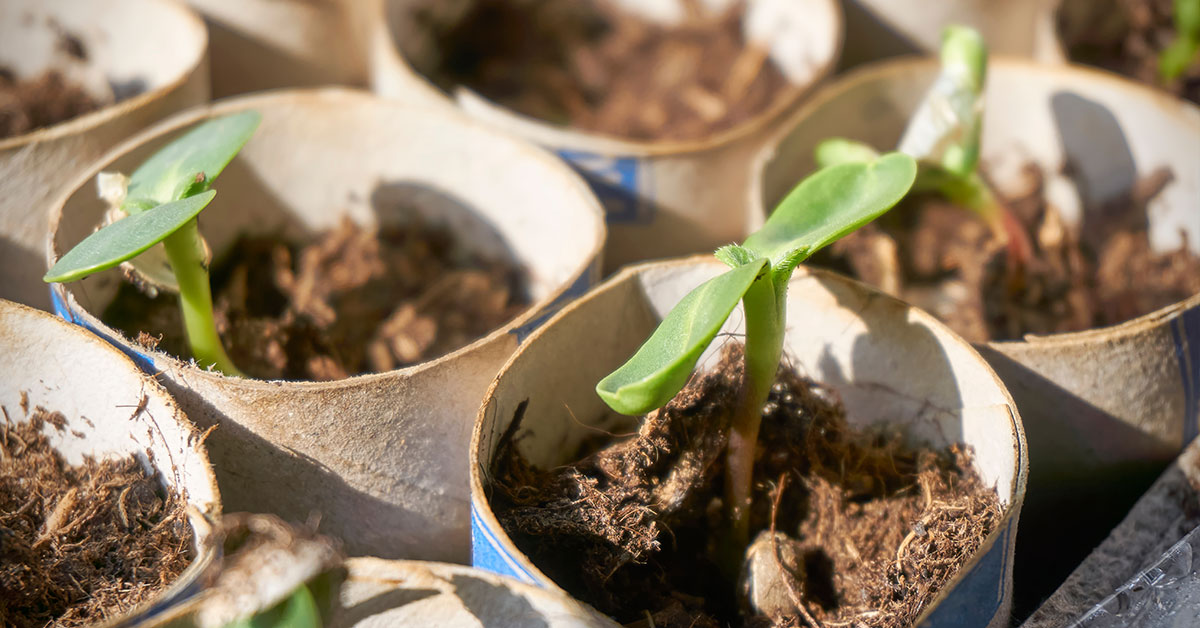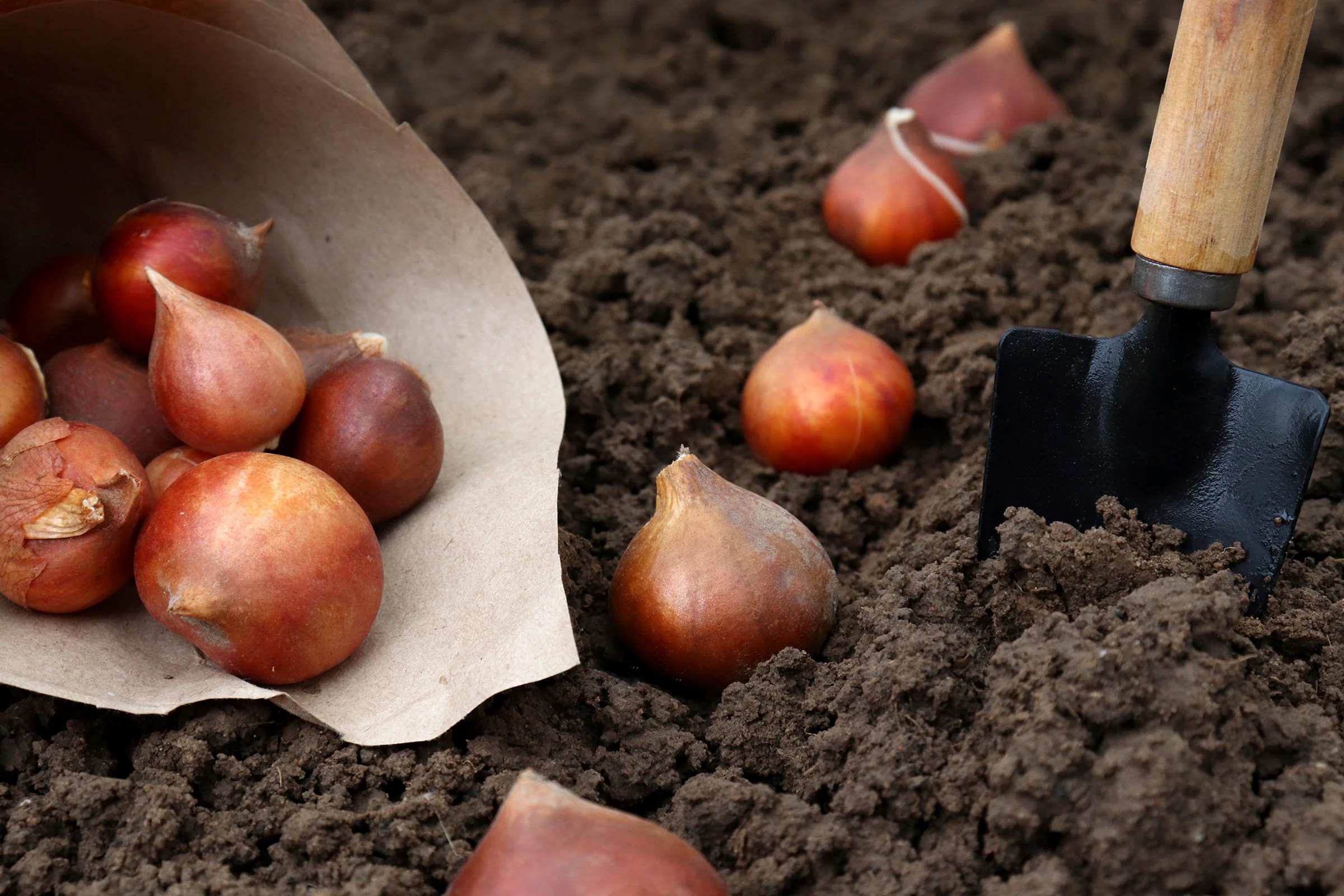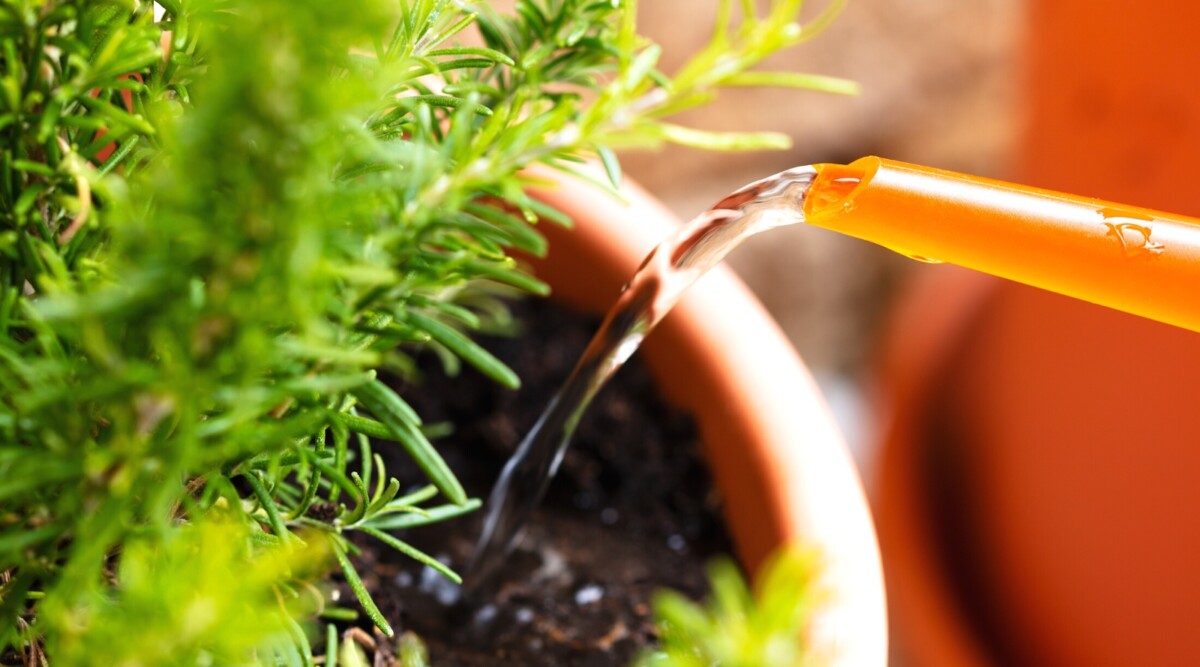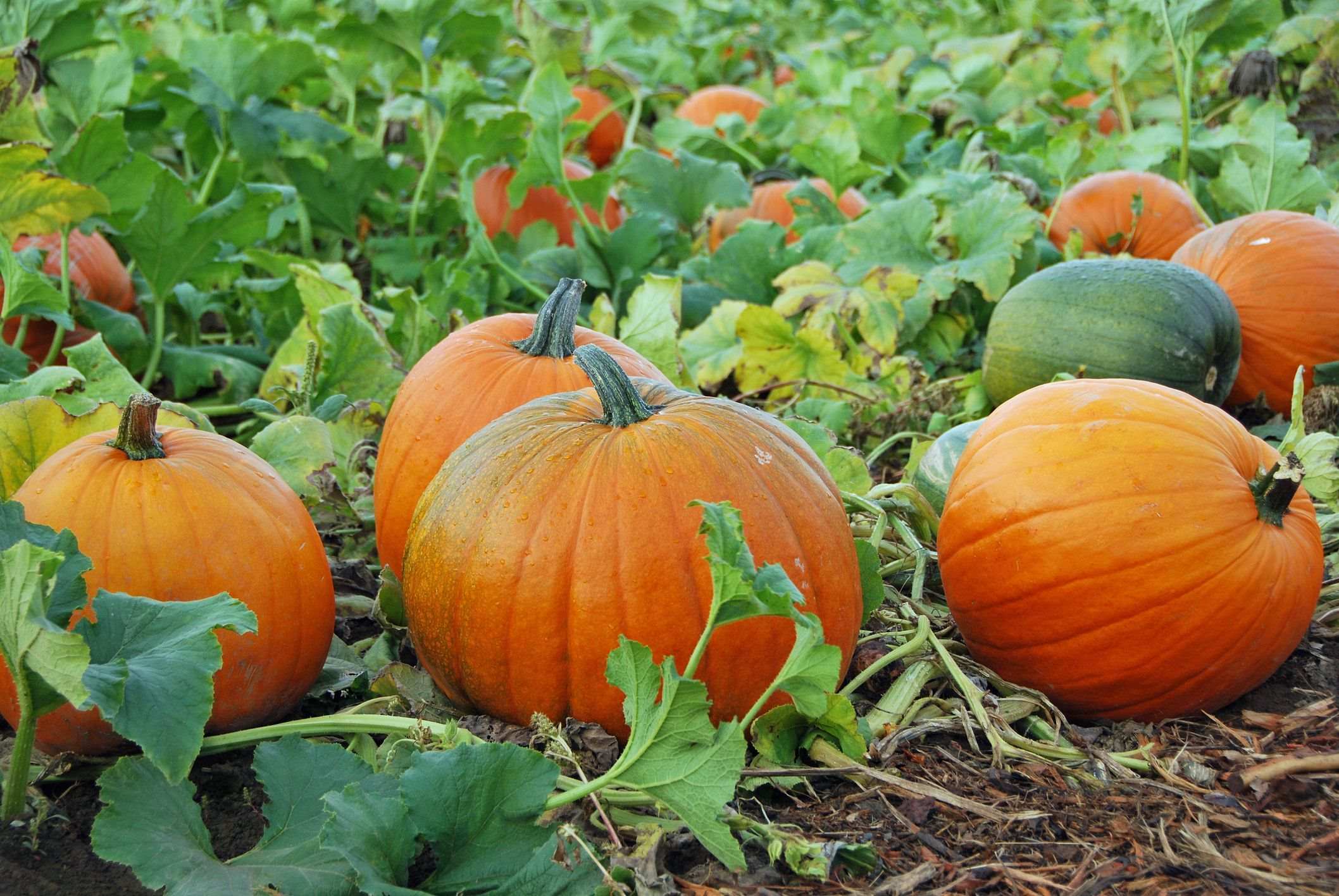Home>Gardening News and Trends>Latest News>Should I Pull Up Already Existing Weeds When Planting Ground Cover In Permaculture


Latest News
Should I Pull Up Already Existing Weeds When Planting Ground Cover In Permaculture
Published: February 16, 2024
Discover the latest news on whether you should pull up already existing weeds when planting ground cover in permaculture. Find out the best practices in this informative article.
(Many of the links in this article redirect to a specific reviewed product. Your purchase of these products through affiliate links helps to generate commission for Chicagolandgardening.com, at no extra cost. Learn more)
Table of Contents
- Introduction
- Understanding the Role of Weeds in Permaculture
- Benefits and Drawbacks of Leaving Existing Weeds
- Assessing Weed Type and Impact on Ground Cover
- Factors to Consider Before Pulling Up Existing Weeds
- Strategies for Dealing with Weeds When Planting Ground Cover
- Importance of Mulching in Weed Suppression
- Maintaining a Healthy Ground Cover System
- Conclusion
Introduction
Welcome to the world of permaculture, where sustainable and regenerative practices meet ecological harmony. When it comes to creating a thriving permaculture system, one important aspect to consider is ground cover. Ground cover plays a crucial role in soil health, moisture retention, weed suppression, and overall ecosystem balance. However, before planting ground cover, it’s essential to address the existing weeds that may have already taken root.
Weeds are often seen as the enemy in gardening and landscaping, but they can actually serve a purpose in permaculture systems. Weeds can provide important ecological functions such as soil enrichment, erosion control, and habitat for beneficial insects. However, they can also compete for resources and hinder the growth of desired plants. This raises the question – should you pull up already existing weeds when planting ground cover in permaculture?
There are various factors to consider when making this decision, including the type of weeds present, their impact on ground cover establishment, and your specific goals for your permaculture system. This article will explore the benefits and drawbacks of leaving existing weeds, as well as strategies for effectively dealing with weeds when planting ground cover.
By understanding and balancing the role of weeds in permaculture, you can make informed decisions that support the long-term health and resilience of your system. So, let’s dig in and find out if pulling up already existing weeds is the best approach for your permaculture ground cover!
Understanding the Role of Weeds in Permaculture
In order to make an informed decision about whether to pull up already existing weeds when planting ground cover in permaculture, it’s important to understand the role that weeds play in this system. Weeds are often seen as nuisances or invaders, but they can actually offer several benefits in a permaculture setting.
Firstly, weeds can provide ecological services that contribute to soil health. Many weeds have deep root systems that help to break up compacted soil, improving its structure and allowing for better water and nutrient absorption. Additionally, some weed species are nitrogen fixers, meaning they have the ability to convert atmospheric nitrogen into a form that plants can use. This can enrich the soil with this essential nutrient, benefiting both the ground cover and other plants in the vicinity.
Secondly, weeds can play a role in erosion control. Their extensive root systems help to stabilize soil, preventing erosion caused by wind or water. This is particularly important on sloping or bare areas where topsoil erosion can pose a significant challenge. By allowing certain weeds to grow, you are essentially utilizing their natural abilities to protect your permaculture system from soil loss.
Furthermore, weeds can provide habitat and food sources for beneficial insects and other organisms. Many weeds produce flowers that attract pollinators, aiding in the reproduction of nearby plants. Additionally, weeds can act as a refuge for pest-controlling insects, providing them with shelter and food. By nurturing a diversity of plants, including certain weed species, you can create a balanced ecosystem that supports natural pest management and enhances overall resilience.
However, it’s important to note that not all weeds are beneficial in a permaculture system. Some aggressive weed species can outcompete desired ground cover plants for resources, causing them to struggle or fail to establish. These weeds may also have allelopathic properties, releasing chemicals that inhibit the growth of nearby plants. Therefore, it’s crucial to assess the specific weeds present and their impact on the ground cover you intend to plant.
Now that we have a better understanding of the role of weeds in permaculture, let’s delve deeper into the benefits and drawbacks of leaving already existing weeds when planting ground cover.
Benefits and Drawbacks of Leaving Existing Weeds
When it comes to leaving already existing weeds when planting ground cover in permaculture, there are both benefits and drawbacks to consider. Understanding these factors can help you make an informed decision that aligns with your goals for your permaculture system.
One of the key benefits of leaving existing weeds is the potential for ecological benefits. As mentioned earlier, certain weeds can contribute to soil health by improving soil structure, adding nutrients, and aiding in erosion control. By allowing these weeds to coexist with your ground cover, you can harness their natural abilities to enhance the overall health and resilience of your system.
Leaving existing weeds can also help expedite the establishment of your ground cover. Weeds often have rapid growth rates, which can lead to quick coverage and protection of the soil. This can be particularly beneficial in areas where soil erosion is a concern or where you want to establish ground cover quickly for aesthetic or functional purposes. In this case, the weeds act as a temporary cover crop until the desired ground cover becomes well-established.
Another advantage of leaving existing weeds is the potential savings in time and effort. Pulling up weeds can be a labor-intensive task, especially if you have a large area to cover. By leaving existing weeds that are not antagonistic to your ground cover, you can save yourself the time and energy that would have been spent on weed removal. This allows you to focus on other important tasks in your permaculture system.
However, there are also drawbacks to consider when leaving existing weeds. As mentioned earlier, some weeds can be aggressive and outcompete your desired ground cover plants for resources. This can lead to stunted growth or a lack of establishment for your intended ground cover. In these cases, it may be necessary to selectively remove the aggressive weeds to create space and give your ground cover a better chance of thriving.
Another drawback of leaving existing weeds is the potential for allelopathy. Some weed species release chemicals that can inhibit the growth and development of nearby plants, including the ground cover you want to establish. If you notice signs of allelopathic effects, such as yellowing or wilting of your ground cover plants, it may be necessary to remove the weeds to prevent further damage.
Ultimately, the decision of whether to leave or remove existing weeds depends on a careful assessment of the specific weed species present, their impact on your ground cover, and your goals for your permaculture system. By weighing the benefits and drawbacks, you can make an informed decision that supports the long-term health and success of your ground cover and overall permaculture system.
Assessing Weed Type and Impact on Ground Cover
When deciding whether to leave or remove existing weeds when planting ground cover in permaculture, it’s important to assess the specific weed types and their potential impact on the establishment and success of your ground cover. By understanding the characteristics of the weeds and their interactions with your desired plants, you can make more informed decisions about how to manage them effectively.
The first step in assessing weed type is identification. Different weed species have varying growth habits, reproduction strategies, and competitive abilities. Take the time to identify the weeds in your permaculture system, either through research or seeking advice from local gardening or agricultural resources. This will provide valuable insights into the potential impact of each weed on your ground cover.
Once you have identified the weeds, consider their growth characteristics. Some weeds have extensive root systems that may compete directly with the roots of your ground cover plants for moisture, nutrients, and space. These aggressive weeds can hinder the establishment and growth of your desired ground cover. On the other hand, some weeds may have shallow root systems or growth habits that allow your ground cover to coexist without competition or negative impact.
Additionally, it’s important to assess the reproductive strategy of the weeds. Some weed species are prolific seed producers, and their seeds can persist in the soil for years, germinating and growing even after removal. If the weeds in your permaculture system fall into this category, it may be necessary to remove them to prevent future infestations that could impede the growth and health of your ground cover.
Consider the growth stage of the weeds as well. If the weeds are in the early stages of growth, they may be easier to remove and manage. However, if they have already reached maturity and produced seeds, removing them may require more effort and attention to prevent the spread of those seeds.
Another factor to consider is the allelopathic potential of the weeds. Some weed species release chemicals that can inhibit the growth of nearby plants, including your ground cover. If you observe signs of allelopathy, such as stunted growth or discoloration in your ground cover, it may be necessary to remove the weeds to minimize this negative impact.
Ultimately, assessing the weed type and its impact on your ground cover is crucial for making informed decisions in permaculture. By understanding the growth habits, reproductive strategies, and competitive abilities of the weeds, you can develop appropriate strategies to manage them effectively while ensuring the success of your ground cover in the long run.
Factors to Consider Before Pulling Up Existing Weeds
Pulling up existing weeds can be a labor-intensive task, and it’s important to carefully consider a few key factors before deciding to remove them when planting ground cover in permaculture. By taking these factors into account, you can ensure that your decision aligns with your goals for your permaculture system and maximizes the success of your ground cover.
The first factor to consider is the impact of the weeds on your ground cover. Assess whether the existing weeds are directly interfering with the establishment and growth of your desired ground cover. If the weeds are aggressive, have extensive root systems, or are inhibiting the growth of your ground cover plants, it may be necessary to remove them to create space and minimize competition.
Another factor to consider is the density and distribution of the weeds. If the weeds are scattered and sparse, their impact on your ground cover may be minimal. In this case, it may be more appropriate to leave them and focus on other weed management strategies, such as mulching or interplanting with companion plants that can outcompete the weeds.
Consider the long-term management implications as well. If the weeds are known to be persistent and difficult to control, removing them may prevent future headaches and save you time and effort. On the other hand, if the weeds are easily regenerating or if removing them creates a vacuum for new weeds to establish, it may be more sustainable to implement strategies that suppress weed growth without the need for constant manual removal.
It’s also important to consider your available resources and time commitment. If you have limited time and manpower, removing all existing weeds may not be feasible or realistic. In such cases, you can focus on removing the most problematic or aggressive weeds that pose the greatest threat to your ground cover’s establishment and growth.
Take into account your overall permaculture goals and values. If you prioritize biodiversity and ecological balance, you may choose to leave existing weeds that provide ecological services or support specific wildlife species. However, if you prioritize aesthetics or the establishment of a specific ground cover, removing existing weeds may be necessary to achieve those goals.
Lastly, consider the season and timing of your weed removal. Some weed species are best managed at specific times of the year, such as before they flower and set seeds. By removing weeds strategically, you can prevent the spread of seeds and minimize the potential for future weed infestations.
By considering these factors before pulling up existing weeds, you can make an informed decision that takes into account the specific needs and goals of your permaculture system. Remember, effective weed management is a balance between promoting ecological health and ensuring the success of your desired ground cover.
Strategies for Dealing with Weeds When Planting Ground Cover
When it comes to dealing with weeds when planting ground cover in permaculture, there are several strategies you can employ to effectively manage weed growth and promote the success of your desired ground cover. By implementing these strategies, you can strike a balance between weed control and maintaining a healthy, resilient permaculture system.
One effective strategy is to use mulch. Applying a layer of organic mulch, such as straw, wood chips, or shredded leaves, can help suppress weed growth by blocking sunlight and reducing soil moisture loss. Mulch also helps regulate soil temperature, improve soil structure, and retain moisture, which are all beneficial for the establishment and growth of your ground cover.
Interplanting with companion plants is another strategy to consider. Companion plants are species that have attributes that help outcompete weeds, such as dense foliage or aggressive root systems. By incorporating companion plants among your ground cover, you can create a more competitive and diverse plant community that reduces weed encroachment.
Weeding by hand is a labor-intensive but effective strategy, especially for smaller areas or when dealing with specific problem weeds. By carefully removing weeds by their roots, you can prevent them from regenerating and competing with your ground cover. It’s important to be thorough and remove weeds before they have a chance to produce mature seeds that can further spread the infestation.
For larger areas, mechanical weed control methods can be employed. This includes using tools like hoes or cultivators to disturb the soil and uproot young weeds. However, be cautious not to damage the roots of your ground cover in the process. Mechanical weed control can be particularly useful when combined with mulching or interplanting strategies.
If you prefer a more natural approach, you can utilize weed-smothering cover crops or living mulches. Cover crops are plants that grow densely and quickly, suppressing weed growth and providing additional organic matter to the soil when eventually chopped and turned under. Similarly, living mulches are low-growing plants that act as a living ground cover, shading out weeds and providing added benefits such as nitrogen fixation or attracting beneficial insects.
In some cases, you may choose to use organic herbicides as a last resort. These herbicides are derived from natural sources and target specific types of weeds. However, it’s important to exercise caution and follow the instructions carefully to minimize unintended harm to your ground cover and other beneficial plants.
Cultural practices such as proper watering, regular maintenance, and good soil fertility management can also help create optimal conditions for your ground cover to outcompete weeds. Healthy and vigorous plants are better able to withstand competition and establish themselves successfully.
Remember, implementing a combination of strategies is often the most effective approach. By adopting mulching, interplanting, hand weeding, and other practices, you can keep weed growth in check while promoting the growth and health of your ground cover in your permaculture system.
Importance of Mulching in Weed Suppression
Mulching plays a crucial role in weed suppression when planting ground cover in permaculture systems. By applying a layer of organic mulch to the soil surface, you can effectively block weed growth and create a favorable environment for your desired ground cover. Here are some key reasons why mulching is important for weed control in permaculture.
One of the primary functions of mulch is to block sunlight from reaching the soil surface. Weeds depend on sunlight for photosynthesis, the process by which they produce energy and grow. By covering the soil with mulch, you create a physical barrier that prevents weed seeds from germinating and emerging from the soil. This suppression of sunlight greatly reduces the chances of weed establishment and growth.
Mulch also helps conserve soil moisture by acting as a protective layer. It reduces evaporation by shielding the soil from direct sunlight and wind, thus maintaining a more stable moisture level. Weeds often thrive in bare soil conditions, where moisture loss is higher. By preserving soil moisture with mulch, you create an environment that is less favorable for weed growth, as they require moist conditions to germinate and grow.
In addition to suppressing weed growth by blocking sunlight and conserving soil moisture, mulch provides physical barriers for weed seed germination and establishment. As weed seeds are dispersed by wind, water, or animals, they can easily land on bare soil and take root. However, when mulch is present, it acts as a protective layer that inhibits weed seeds from making direct contact with the soil, thereby reducing their germination and establishment rates.
Mulch also improves soil fertility over time. As it breaks down, organic mulch releases nutrients into the soil, creating a nutrient-rich environment for your ground cover plants. This helps your ground cover plants thrive and compete with any potential weeds that may penetrate the mulch layer. Additionally, the gradual decomposition of mulch adds organic matter to the soil, improving its structure, water-holding capacity, and overall nutrient availability.
Furthermore, mulching promotes beneficial soil microorganisms that contribute to weed suppression. Healthy soils teem with diverse microbial life, some of which have the ability to compete with or even prey upon weed seedlings. By creating a favorable environment through mulching, you encourage the growth and activity of these beneficial microorganisms, enhancing natural weed control mechanisms.
It’s important to note that mulching alone may not completely eliminate all weeds in a permaculture system. Persistent perennial weeds or those that spread through underground rhizomes may still require additional management techniques. However, mulching significantly reduces weed pressure, making it easier to spot and manage any remaining weeds.
Overall, mulching is a highly effective and environmentally friendly approach to weed suppression in permaculture. It provides numerous benefits, including blocking sunlight, conserving soil moisture, physically preventing weed establishment, improving soil fertility, and promoting beneficial soil microorganisms. By utilizing mulch as part of your weed management strategy, you can create a more manageable and successful ground cover system in your permaculture garden.
Maintaining a Healthy Ground Cover System
Once you have planted your ground cover in permaculture, it’s crucial to maintain a healthy system to ensure its long-term success and effectiveness in weed suppression. Here are some key strategies to help you maintain a healthy ground cover system and minimize weed growth.
Regular monitoring and maintenance are essential for a healthy ground cover system. Take the time to inspect your ground cover regularly to identify any signs of weed encroachment or other issues. Promptly address any weed emergence by removing them manually or employing other appropriate weed control methods. By staying proactive and taking swift action, you can prevent weed infestations from becoming major challenges.
Proper irrigation is crucial for the health and growth of your ground cover plants. Provide water as needed, considering the specific requirements of your ground cover species and the prevailing weather conditions. Avoid overwatering, as excessive moisture can encourage weed growth and other issues such as root rot. Use irrigation methods that minimize water waste, such as drip irrigation or soaker hoses, to target water directly to the root zone of your ground cover plants.
Regular fertilization is important to maintain the vigor and health of your ground cover. Choose organic fertilizers that provide essential nutrients for your specific ground cover species. Apply the fertilizer in accordance with the manufacturer’s instructions and avoid over-fertilization, as excessive fertilizer can lead to weed growth and nutrient runoff into nearby water sources. Organic amendments, such as compost, can also be applied to improve soil fertility and nourish your ground cover plants.
Mulching is not only important during the initial planting stage but also for the ongoing maintenance of your ground cover system. Periodically replenish the mulch layer to maintain its weed-suppressing benefits. Mulch can break down over time, especially in high-traffic areas or areas where it is exposed to weathering. Ensure a sufficient thickness of mulch, typically 2-4 inches, to effectively block sunlight and reduce weed germination.
Regular pruning or trimming of your ground cover plants is important to promote healthy growth and maintain desired coverage. Some ground cover species can become overgrown or spread beyond their intended boundaries. By selectively pruning or trimming, you can control their growth patterns and prevent them from becoming invasive or smothering nearby plants. It also helps promote air circulation and discourage the growth of fungal diseases.
Encourage biodiversity in your permaculture system by incorporating a variety of plant species in your ground cover. This diversity helps to create a more resilient and balanced ecosystem, where different plants compete with weeds and provide mutual support. Incorporate plants that have allelopathic properties or repel specific pests to further enhance weed suppression and pest management.
Lastly, continuous learning and adaptation are key to maintaining a healthy ground cover system. Stay updated on the latest permaculture practices and techniques, and be open to experimenting and making adjustments based on your observations and experiences. Each permaculture system is unique, and by being responsive to the needs of your specific environment, you can optimize the health and resilience of your ground cover system.
By implementing these strategies and taking a proactive approach to maintenance, you can establish and maintain a healthy ground cover system that effectively suppresses weeds and contributes to the overall success of your permaculture garden.
Conclusion
Planting ground cover in permaculture can be a powerful strategy for creating a sustainable and thriving ecosystem. However, when it comes to dealing with already existing weeds, there are several factors to consider in order to make informed decisions that support the overall health and success of your permaculture system.
Weeds play complex roles in permaculture systems. While they can provide ecological services like soil enrichment and erosion control, they can also compete with desired ground cover plants and hinder their establishment. It’s important to assess the specific weed types present and their potential impact on your ground cover before deciding whether to remove them.
Leaving existing weeds can offer benefits such as ecological services, quick ground cover establishment, and savings in time and effort. However, aggressive weeds and those with allelopathic properties may need to be selectively removed to ensure the success of your ground cover.
When dealing with weeds, various strategies can be employed. Mulching is a crucial technique that blocks sunlight, conserves soil moisture, physically prevents weed establishment, improves soil fertility, and promotes beneficial soil microorganisms. Other strategies include interplanting with companion plants, hand weeding, mechanical weed control, utilizing cover crops or living mulches, and implementing proper cultural practices.
Maintaining a healthy ground cover system requires regular monitoring, proper irrigation, regular fertilization, mulching maintenance, pruning or trimming, encouraging biodiversity, and continuous learning and adaptation. By implementing these practices, you can maximize the effectiveness of your ground cover in weed suppression and ensure a resilient and thriving permaculture system.
In permaculture, there is no one-size-fits-all approach, as each system is unique. It’s important to assess the specific needs and goals of your permaculture garden and make decisions that align with them. By striking a balance between weed management and ecological health, you can create a successful and harmonious permaculture system that promotes sustainability and resilience.









